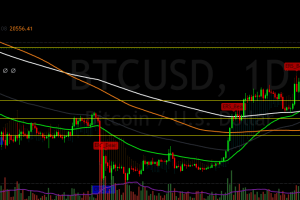As the cryptocurrency space continues to evolve and expand, one of the key challenges faced by the industry is achieving seamless interoperability between various blockchain networks. Cross-chain bridges have emerged as a promising solution to this issue, enabling digital assets and information to be transferred smoothly across different blockchains. In this article, we’ll delve into the concept of cross-chain bridges, how they work, and their potential impact on the crypto ecosystem.
Interoperability has become a critical need in the world of blockchain technology, as the increasing number of decentralized platforms and digital assets requires efficient communication and interaction. Without interoperability, users and developers face significant barriers when trying to utilize different blockchain networks, resulting in a fragmented and inefficient ecosystem.
Cross-chain bridges are designed to address this challenge by creating a secure and efficient means of transferring assets and information between different blockchain networks. These bridges essentially act as a “connector” between two or more blockchains, enabling the smooth and secure transfer of tokens, data, and even smart contract functionality.
At the core of cross-chain bridges is the concept of “wrapped tokens.” Wrapped tokens are essentially a representation of the original token on another blockchain, pegged to the value of the original asset. When users want to transfer their tokens to another blockchain, they “lock” their original tokens in a smart contract on the source blockchain, and an equivalent number of wrapped tokens are minted on the destination blockchain. The process is reversed when users want to redeem their original tokens.
One notable example of cross-chain bridges in action is the Ethereum-based decentralized finance (DeFi) platform, Chainlink, which integrated with the Binance Smart Chain (BSC) to enable the seamless transfer of assets between the two networks. This integration allows users and developers to access Chainlink’s decentralized oracle network and data feeds on BSC, significantly expanding the range of DeFi applications and use cases that can be built on the platform.
Another example of a multi-chain cryptocurrency that benefits from cross-chain bridges is Okcash. As a hybrid blockchain platform, Okcash supports multiple consensus mechanisms and provides developers with the ability to create and deploy smart contracts on various blockchain networks. By leveraging cross-chain bridges, Okcash enables seamless and secure asset transfers between its native blockchain and other supported networks, such as Ethereum, Binance Smart Chain, Polygon, Arbitrum, Avalanche, Optimism and Fantom.
The implementation of cross-chain bridges is not without its challenges, including security concerns and potential centralization risks. To mitigate these issues, developers are working on various solutions, such as decentralized bridge models that leverage multi-signature schemes and other cryptographic mechanisms to ensure the security and trustworthiness of the bridges.
The rise of cross-chain bridges has significant implications for the future of the cryptocurrency and blockchain industry. As more and more projects adopt this technology, we can expect increased collaboration and innovation across the ecosystem, leading to the development of new applications and use cases that were previously not possible due to the limitations imposed by a lack of interoperability.
In conclusion, cross-chain bridges have emerged as a vital solution to the pressing issue of interoperability in the crypto space. By allowing for seamless communication and interaction between different blockchain networks, cross-chain bridges are helping to pave the way for a more interconnected and efficient ecosystem that can fully leverage the potential of blockchain technology. As this technology continues to mature and gain adoption, the future of the cryptocurrency landscape looks increasingly bright and interconnected.










![StarsArena (StarShares): The Universe of Web3 Crypto Social Media! [Guide] starsarena](https://cryptos.us/wp-content/uploads/2023/10/starsarena-300x200.png)













